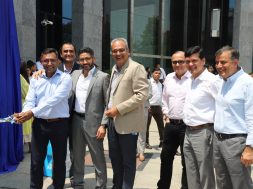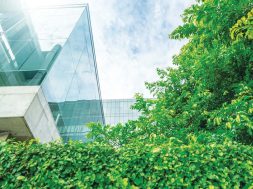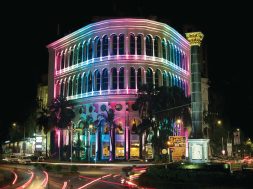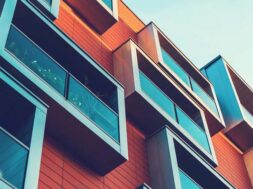According to Vishwajeet Jhavar, CEO at Marvel Realtors, “Material efficiency and energy efficiency go together, and help not only in reducing manufacturing costs, but also in reducing emissions and wastes”
Green QuotientWhether it is to preserve the environment or to save money, using energy-efficient building materials is a smart move today. Building from the start or remodelling an existing home or office with energy efficient materials can produce big savings. Also, governments worldwide are attempting to minimise the effects of construction on the environment. Like many other countries, India is becoming increasingly aware of the environmental impact of the construction industry and the importance of 'Green' Building.
The term ‘Green Building’ is more broadly referred to as 'sustainable building', it is a structure which uses processes that are environmentally responsible and resource-efficient throughout a building's life-cycle: from design to construction, operation, maintenance, renovation, and demolition.
This kind of initiative/project requires close cooperation of the design team, the architects, the engineers, and the client at all project stages. The green building practice expands and complements the classical building design concerns of economy, utility, durability, and comfort. It is part of an overall objective to meet present needs without creating effects that compromise the future.
Buildings – A Threat for our Environment!Most people are aware that carbon dioxide emissions from automobiles, airplanes, and trains have a serious negative effect on our environment, but few realise the extent of environmental damage caused by buildings. The United Nations Environment Programme (UNEP) recognises that reducing carbon emissions and energy use in commercial building is the fastest and cheapest way to cut back global greenhouse emissions.
More than 40 per cent of CO2 emissions in developed countries come from heating, cooling and powering buildings. These can be reduced through ventilation, heat sinks, the use of solar panels and improved insulation. Electricity can be reduced through improved LED lighting or increased use of natural lighting and the use of energy-efficient appliances. Integrated building design and the modification of building shapes, orientation and materials can also reduce energy use.
Using green building materials and products promotes conservation of dwindling non-renewable resources internationally. In addition, integrating green building materials into building projects can help reduce the environmental impacts associated with the extraction, transport, processing, fabrication, installation, reuse, recycling, and disposal of these building industry source materials.
Material EfficiencyThe use of green building products and material efficiency represents one important strategy in the design of a building. But what does material efficiency mean? It means using smaller amounts of material inputs to produce the same quantities of finished products or to deliver the same utility. It can also include use of alternate raw materials that may have lower environmental footprints, such as certain engineered materials, recycled materials and refurbished components.
Direct reduction of material use and waste is just one part of the material efficiency solution. Greater material efficiency can be achieved through strategies such as green/environmental friendly design or sustainable architecture, life-cycle assessment, energy and water efficiency etc. In fact, material efficiency and energy efficiency go together, and help not only in reducing manufacturing costs, but also in reducing emissions and wastes (and associated costs). Best results in material efficiency are achieved by influencing early on through planning and promoting designs that are green, where all aspects of a building's impacts on the local environment are considered, right at the design stage itself. In an optimal situation the whole value chain will benefit from life cycle considerations in product development. Along with material efficiency, energy and water efficiency aspects are also considered. Architects use many different techniques to reduce the energy needs of buildings and increase their ability to capture or generate their own energy. To reduce energy consumption, high-efficiency windows and insulation in walls, ceilings, and floors increase the efficiency of the building envelope, (the barrier between conditioned and unconditioned space).
‘Marvel’ StrategyLuxury developers, Marvel Realtors, to make their commercial buildings energy efficient, constructs walls which have perforated aluminium composite panels that reduce heat gains due to the ventilated air gaps, like in their project Marvel EDGE, an innovative and luxurious commercial project in Pune, developed in a total area of 1.1 million sq. ft. The interior walls have ACC blocks which maintain thermal insulation inside the building. The AAC blocks also reduce the dead weight of buildings, saving on concrete work and providing insulation to the buildings. The roof consists of high SRI material along with insulation to reflect maximum heat, in-turn prevents heat gain inside the building and lastly the glass in the windows has low SHGC materials and is double glazed. This double glazed glass, used in air-conditioned buildings, reduces heat load and saves energy during operation.
Another strategy for making the building more energy efficient is to create designs that involve usage of solar energy, which are often implemented in low-energy homes. For e.g. the designers orient windows, walls and place canopy, porches to shade windows and roofs during the summer while maximising solar gain in the winter. In addition, effective window placement can provide more natural light and lessen the need for electric lighting during the day. Power generation is generally the most expensive feature to add to a building. To reduce this, on‑site generation of renewable energy through solar power, wind power, or biomass can significantly reduce the environmental impact caused by the building. Solar devices such as photovoltaic solar panels can be installed on the roof which helps to provide sustainable electricity for any use. Solar water heating systems are another cost-effective way to generate hot water for a home which further reduces energy costs. A huge range of materials – both raw as well as assembled – go into the construction of a building or structure. This stage of a building provides a number of opportunities to aim for material efficiency, including, for e.g. the reduced use of scarce materials, materials that create comfortable indoor environments (reducing the need for energy to heat or cool a building), use of recycled rather than raw materials (especially for wood products), etc.
Recycle & ReuseUsing appropriate building codes and ISO standards for energy efficiency also helps. Building materials can incorporate the use of recycled or second hand materials, such as reclaimed lumber. When older buildings are demolished, frequently any good wood is reclaimed, renewed, and sold as flooring. Many other parts are reused as well, such as doors, windows, mantels, and hardware, thus reducing the consumption of new goods. Low-impact building materials can be used wherever feasible, for e.g. insulation may be made from low VOC (volatile organic compound)- emitting materials rather than the building insulation materials that may contain carcinogenic or toxic materials such as formaldehyde. VOC can be found in any indoor environment coming from a variety of different sources. VOCs have a high vapour pressure and low water solubility, and are suspected of causing sick building syndrome type symptoms. Green products are usually considered to contain fewer VOCs and be better for human and environmental health. Also important to indoor air quality is the control of moisture accumulation (dampness) leading to mold growth and the presence of bacteria and viruses as well as dust mites and other organisms and microbiological concerns. Water intrusion through a building's envelope or water condensing on cold surfaces on the building's interior can enhance and sustain microbial growth. A well-insulated and tightly-sealed envelope will reduce moisture problems but adequate ventilation is also necessary to eliminate moisture from sources indoors including human metabolic processes, cooking, bathing, cleaning, and other activities. Marvel Realtors uses good amount of recycle content materials in their commercial projects, which reduces the environmental impact due to extraction of material from earth. Also, FSC certified wood are utilised which basically ensure that forestry is practiced in an environmentally responsible way that takes into account economic viability, and social responsibility.
Manage Wastes BetterAiming for better material efficiency also provides a number of opportunities during the construction phase of a building's life‑cycle. This is particularly true in terms of ensuring that materials are not unduly wasted, or less water and energy is used in the processes. Water efficiency can be obtained by utilising materials and systems that help reduce water consumption in buildings and conserve water in landscaped areas. Designing a dual plumbing to use recycled water for toilet flushing or a water system that recovers rainwater or other non-potable water for site irrigation is one way. Wastewater can be minimised by using ultra low-flush toilets, low-flow shower heads, and other water conserving fixtures. During the construction phase, one goal should be to reduce the amount of material going to landfills. Well-designed buildings also help reduce the amount of waste generated by the occupants as well, by providing on-site solutions such as compost bins to reduce matter going to landfills. Marvel Realtors have adopted efficient waste management methodologies to reduce the landfill of waste material.
Lead India through LEEDNo matter how sustainable a building may have been in its design and construction, it can only remain so if it is operated responsibly and maintained properly. Ensuring operations and maintenance (O&M) personnel are part of the project's planning and development process will help retain the green criteria designed at the onset of the project. Every aspect of green building is integrated into the O&M phase of a building's life. The addition of new green technologies also falls on the O&M staff. Although the goal of waste reduction may be applied during the design, construction and demolition phases of a building's life-cycle, it is in the O&M phase that green practices such as recycling and air quality enhancement take place. Developed by the U.S. Green building Council, the Leadership in Energy and Environmental Design (LEED) consists of a suite of rating systems for the design, construction and operation of high performance green buildings, homes and neighbourhoods. In India, the Indian Green Building Council has the LEED India green building rating system. They promote a whole-building approach to sustainability by recognising performance in the following five key areas: sustainable site development, water savings, energy efficiency, materials selection, and indoor environmental quality.
Cookie Consent
We use cookies to personalize your experience. By continuing to visit this website you agree to our Terms & Conditions, Privacy Policy and Cookie Policy.









